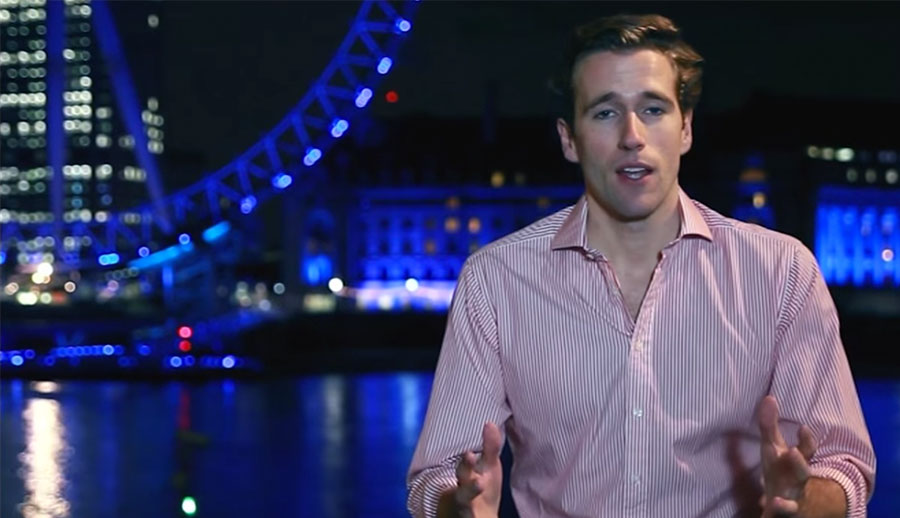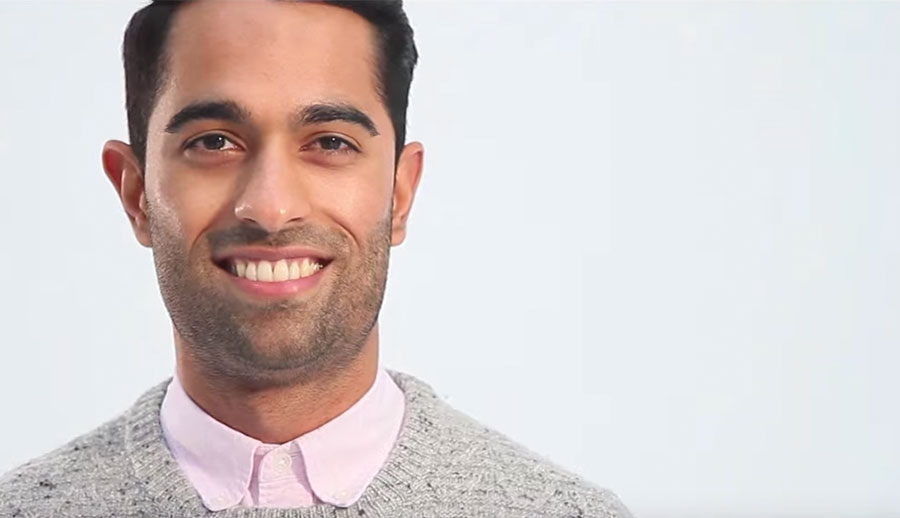-
.
-
1 To 1 Programme
- Tailor-made presenter coaching/filming on location, studio or both for presenters, influencers or business people to maximise your potential.
- Work with BAFTA winning Producers and BBC Talent Executives for the BBC, ITV, Channel 4 and top brands like ASOS, Amazon & Vogue.
- You’ll learn OUR secrets that have helped create TV’s and social media's biggest presenters.
- We are the ONLY presenter training company endorsed by TV agents and TV channels.
- Includes an initial consultation to discuss your needs, personal brand, how to market yourself and ideas for your filming day.
- Incredible success rate - 100% 5 star reviews. Amazing exclusive job and networking opportunities.
WHY WE’RE VOTED THE BEST
Displaying items by tag: presentation skills course
What to Expect from a Presentation Skills Course with The Presenter Studio
Choosing the right presentation skills course can be tricky. Many promise big results, but few deliver on real impact. At The Presenter Studio, we’ve designed our courses around how people really learn—through doing, through feedback and through expert guidance that fits your unique voice.
Our training combines storytelling, body language, vocal techniques and content structuring. But what sets us apart is how personalised it is. We don’t offer cookie-cutter solutions. Instead, we work with who you are and where you want to go. Whether you need to lead internal meetings or deliver keynote speeches, our sessions are tailored to your real-world needs.
You’ll work with TV directors and communication coaches who bring out your best. They’ll help you think like a performer—so you not only inform but also inspire. Every exercise is rooted in performance psychology and media presentation techniques, refined over years of working with high-profile clients.
If you’re looking for a course that respects your individuality and boosts your presence, The Presenter Studio is here to help.
Visit: https://www.presenterstudio.com/business-presenter-training/presentation-skills-training
Why a Presentation Skills Course Could Be the Game-Changer You Need
For many professionals, presenting can be a nerve-wracking part of the job. Whether you're pitching ideas in a boardroom or addressing a virtual team meeting, strong presentation skills can set you apart. But these skills aren’t something you're born with—they're learned, developed and fine-tuned.
That’s where a presentation skills course comes in. At The Presenter Studio, we bring a unique, real-world approach. Unlike generic workshops, our training is created by TV professionals who know what it takes to engage an audience. It's not about being perfect; it's about being authentic, clear and confident.
We focus on practical tools that suit your style. From structuring your content to finding your natural performance, our coaching helps you create presentations that people remember for the right reasons. It’s ideal for professionals at any stage—whether you dread public speaking or want to polish your delivery for high-stakes moments.
When done right, a presentation skills course is more than a one-off workshop—it’s a turning point in how you communicate.
Learn more at: https://www.presenterstudio.com/business-presenter-training/presentation-skills-training
Practice Makes Perfect – How to Rehearse Your Presentation
The phrase practice makes perfect is repeated often—but when it comes to presentation skills, not all practice is created equal. Rehearsing your presentation properly is one of the most effective ways to boost your confidence, sharpen your delivery, and connect with your audience.
The key is to move from passive preparation to active rehearsal. Instead of reading through your notes silently, stand up and speak aloud. This engages your voice, body, and mind, helping you internalise your message. You’ll notice where transitions feel clunky or where you stumble over words—insights you’d never get just reading quietly.
Filming yourself can be a powerful, but also can be a little dangerous - as how many of us like watching ourselves back? But watching yourself back shows how you come across. You’ll notice how much you gesture, where you speed up, and whether your tone is engaging. These are the small details that separate average presentations from great ones.
It also helps to rehearse in front of others. A friend or colleague can give feedback that you may not spot yourself. Ask them to focus on specific areas—like your clarity, tone, or structure. Even running through it in front of just one person can help reduce nerves and increase fluency.
Don’t aim for perfection. Aim for flow. Your goal isn’t to deliver a word-perfect script but to communicate with confidence and purpose. Rehearsal helps you own the message rather than just repeat it.
Finally, rehearse in the space you’ll be presenting in, if possible. Familiarity with the environment, tech setup, and audience layout can help you feel grounded on the day.
With the right rehearsal techniques, you’ll feel more prepared, more authentic, and more in control. Great presenters aren’t born—they’re made, one practice session at a time.
For presentation training that helps you rehearse with impact and purpose, visit
https://www.presenterstudio.com/business-presenter-training/presentation-skills-training
Don’t Be Alone – Presenting as a Team
When people think of giving a presentation, they often imagine standing alone in front of an audience. But in many workplaces, presentations are shared among a team. Whether it's a pitch, a project update, or a strategy session, co-presenting is a common and valuable skill.
Effective team presenting begins with clear roles. Each person should know which part of the message they are responsible for and how their contribution fits into the wider story. This prevents overlap, confusion, and repetition. Good preparation creates clarity.
Transitions between speakers are where many group presentations falter. It's important to practise handing over smoothly, introducing the next person with warmth and context. Phrases like “Jane will now talk through the financial side of our plan” help maintain flow and keep the audience engaged.
Joint rehearsal is essential. While you may feel confident on your own, group dynamics only come to life when everyone is in the room together. Practise how you will stand, where you’ll look, and how to keep the energy consistent throughout.
Even when you’re not speaking, you are still part of the presentation. Listening attentively, nodding, or even reacting to each other’s points creates a sense of cohesion and credibility. A disengaged co-presenter can undermine the whole experience.
Keep your slides, tone, and style consistent. Even if different people are speaking, the presentation should feel like one unified message. Agree on language, branding, and presentation format ahead of time to avoid clashing styles.
Presenting together takes skill and practice, but when done well, it can show off your team's strengths and unity. With professional coaching, your team can move from individual voices to a collective performance that delivers results.
Discover more about training for team presentations at
https://www.presenterstudio.com/business-presenter-training/presentation-skills-training
Presentation Skills Training – The Art of Memorising Your Presentation
Memorising your presentation can feel like one of the biggest challenges when preparing to speak. Many people assume they have to learn it word for word, but the real goal is to speak with clarity and confidence without sounding robotic.
One of the best ways to start is by thinking in sections. Instead of writing out a full script, break your talk into key themes or chapters. This makes it easier to remember what comes next and gives your presentation structure. The more natural the structure, the easier it will be to internalise.
Visual aids like slides or props can act as helpful memory prompts. They not only support your audience’s understanding but give you subtle reminders of where you are in your message. Just be careful not to read directly from them—use them as guides, not crutches.
Another powerful memory tool is storytelling. When you share personal experiences or case studies, it becomes much easier to recall what you want to say. Stories also hold attention and create emotional engagement with your audience.
Rehearsing out loud is vital. Stand up, speak clearly, and run through your presentation as though the audience is in front of you. Don’t just mumble it under your breath—give it the energy and rhythm you plan to use on the day. You can even record yourself and watch it back to identify areas that feel awkward or need tightening.
Importantly, memorising doesn’t mean reciting. The best presenters know their material inside-out but leave room for spontaneity. If you lose your place, stay calm. The audience doesn’t know what you forgot to say. Focus on your message, not the script. Using prompt cards is a great device - get some branded ones made up with the company logo on the back so it looks super slick!
True confidence comes from knowing your content, not memorising every word. With expert presentation skills training, you’ll learn to feel prepared, sound natural, and present with real impact.
Learn more at https://www.presenterstudio.com/business-presenter-training/presentation-skills-training
Public Speaking and Presentation Course
Public speaking is one of the most valuable skills in business, yet it's also one of the most feared. Our public speaking and presentation course is designed to help you overcome nerves and learn how to connect with any audience.
The fear of speaking often comes from uncertainty – what to say, how to say it, and whether people will listen. That’s why our training focuses on preparation and confidence. We help you build structure into your talk, so you always know where you’re going. We coach you to breathe well and use your voice with energy, not volume.
One useful tip is to practice your opening out loud, multiple times. Your first 30 seconds matter the most – that’s when the audience decides if they’ll pay attention. A strong start, with clarity and eye contact, sets the tone for everything that follows.
We also explore how to deal with nerves in the moment. Instead of trying to “get rid” of them, we show you how to channel nervous energy into positive performance. Confidence isn’t about pretending you’re not nervous – it’s about performing well in spite of it.
To find out more and book your place, visit: https://www.presenterstudio.com/business-presenter-training/presentation-skills-training
Presentation Skills for Leaders
Leaders are expected to communicate vision, drive change and influence others – often with little formal training in how to actually present well. That’s where our presentation skills for leaders course comes in. It’s about more than just what you say. It’s about how you lead the room.
Great leadership starts with presence. One simple but powerful technique is to pause before you speak. It builds gravitas, shows control, and instantly makes the audience listen. We also coach leaders to be aware of posture and movement – standing still when making a key point, and using purposeful gestures to emphasise ideas.
We also explore how to structure content for maximum impact. Leaders often overwhelm people with data. Instead, we teach how to lead with the “why”, and how to use storytelling to bring strategy to life. Storytelling isn’t soft – it’s one of the most powerful leadership tools you can use.
Whether you lead a team of five or five hundred, our course will help you engage people with more clarity, connection, and confidence.
More information here: https://www.presenterstudio.com/business-presenter-training/presentation-skills-training
Bespoke Presentation Skills Course
A one-size-fits-all approach rarely works when it comes to communication. That’s why our bespoke presentation skills course is designed around you – your goals, your challenges, your audience. Whether you’re presenting at a team meeting, client pitch, or industry conference, the way you show up can make all the difference.
We start by understanding your natural communication style and building from there. Our training helps you find your voice, clarify your message, and connect with authenticity. A bespoke course means you’ll get specific help where it counts – whether that’s body language, storytelling, or how to handle Q&A with ease.
One key tip we always teach is to avoid starting with slides. Build your narrative first. What’s your message? What do you want the audience to feel or do? Once you know that, visuals become a support tool, not the presentation itself.
With our tailored coaching, you’ll walk away with tools that work for your personality, not a rehearsed script. We can also give you access to filming and playback, so you can see the transformation in real time.
Find out more at: https://www.presenterstudio.com/business-presenter-training/presentation-skills-training
How to Use Slides in a Presentation (Without Relying on Them)
Slides can be helpful. But they’re often misused. Too much text. Too many transitions. Too many moments where the presenter turns to the screen and forgets about the people in front of them.
At Presenter Studio, we encourage presenters to see slides for what they are – a visual support, not a script to hide behind. The moment you speak to the screen instead of your audience, you’ve lost the room.
Start by reducing the amount of text. A single headline. A striking image. A few key figures or quotes. That’s all you need. If you fill the slide with dense paragraphs, people will read ahead and stop listening to you.
Next, keep your focus on the audience. Speak from your own knowledge and experience. Let the slide reinforce your message, not carry it. You should never feel like the screen is doing the heavy lifting. You are the presentation.
Finally, ask yourself if you even need slides. Not every idea needs a visual. Sometimes the most powerful moment comes when you tell a story without anything on screen. When the attention is entirely on your voice and your message.
Using slides well is about restraint, clarity, and confidence. If you want to improve your delivery and visual communication, take a look at our training at
Why a Smile Is Your Most Powerful Presentation Tool
A smile can do more than ease your nerves. It can help you connect. It can build trust. And it can make your message land with far more impact.
At Presenter Studio, we’ve seen time and again how a genuine smile transforms the energy in the room. It makes the speaker more approachable. It puts the audience at ease. And it shifts the whole tone of a presentation.
Smiling tells your audience you’re comfortable. That you’re open. That you’re confident in what you’re saying. It also signals warmth, which makes people more likely to listen and respond to you.
And the effects aren’t just outward. Smiling helps you as the presenter. It calms your nervous system. It slows your breathing. It reminds your brain that you’re in control.
The next time you present, think of it as a two-way connection. Look people in the eye. Acknowledge the room. Smile when it feels natural and let that energy guide you. It’s not about being overly cheerful. It’s about being real, present, and human.
If you want to feel more relaxed and confident in front of an audience, our business presentation training will give you tools you can trust. Explore the full course at: https://www.presenterstudio.com/business-presenter-training
-
Watch Our Amazing Talent Taster Tapes
Talent Taster Tapes
We are the ONLY company to give you an industry recognised showreel.
That’s because we are the ONLY company to brand and market you for the genre of TV you are suited to.
In TV we call showreels 'Talent Taster Tapes' - and with us, that's what you'll get.
-
Optional Extras























